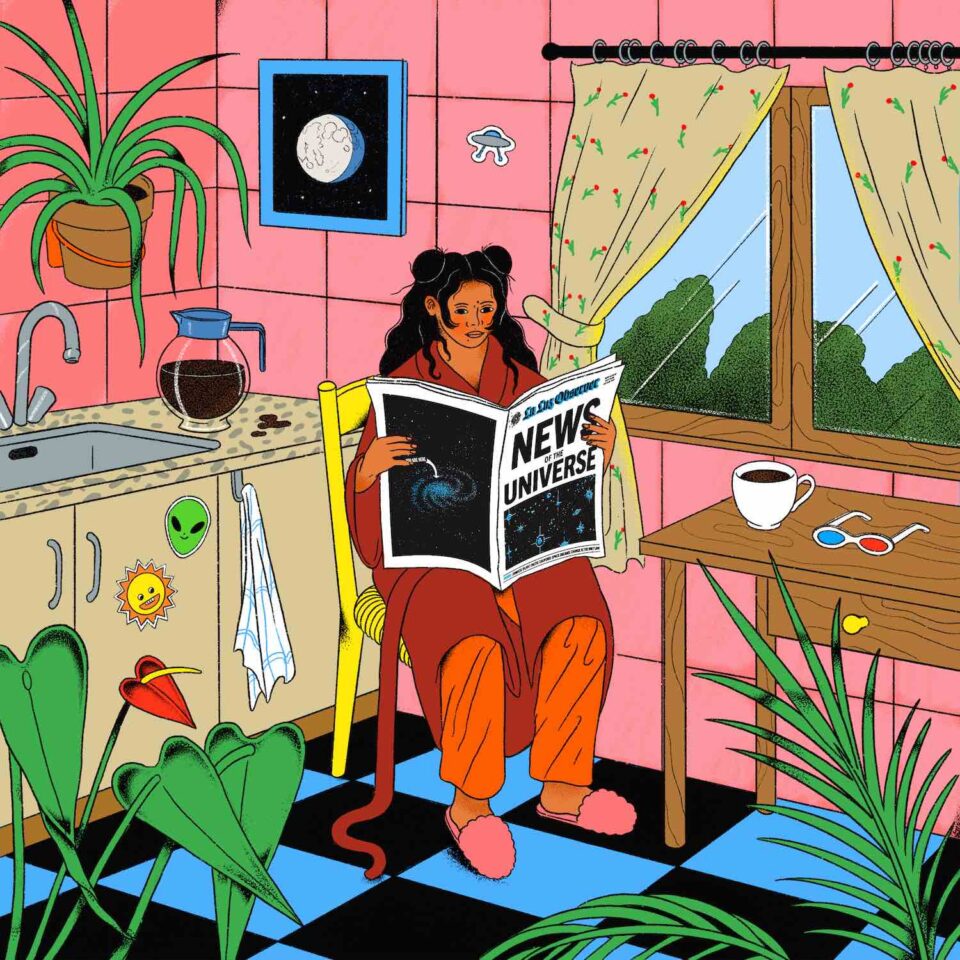Heston Blumenthal doesn’t believe the joys of eating should be experienced only by one’s tastebuds. Widely regarded as one of the leading chefs in the world, Blumenthal has spent his career subverting not just what we eat, but how we eat it. The crown jewel of Blumenthal’s culinary experimentation is The Fat Duck, one of only four restaurants in England to earn the coveted rating of three Michelin stars. The success of The Fat Duck lies in the science of neurogastronomy, an emerging field of study that examines how one’s sense of taste is interpreted by the brain. It also derives from Blumenthal’s own life as a synesthete, someone whose perception literally mixes one sense with a seemingly unrelated one. While the neurological phenomenon is most often associated in popular culture with songwriters and musicians (Stevie Wonder, Billy Joel, Kanye West) who connect specific notes or tones with correlating colors and hues, Blumenthal is one of the few chefs to have reported feeling its effects, and one of the very few who has allowed it to influence his cooking.
Blumenthal took a few moments to discuss the relationship between our tongue and our brains, what a multisensory eating experience is like, and how synesthesia has influenced his pursuits as a chef.

Damping Through the Boroughgroves
When did you become conscious of your synesthesia and what it meant?
I was filming the second series of my BBC show In Search of Perfection back in 2007, and one of the episodes was on Chilli con Carne. I was having a chat with the team about chillies, describing the spiciness as spiky, pointed—visually it’s a sharp flavour. One of my researchers, Emma, started running through the alphabet and asked me a series of questions. “If you think about the letter B, do you see a color?” “Blue,” I replied. “T?” “Also blue.” “S?” “Brown.” “L?” “Yellow.” I remember she smiled and suggested I do a bit of research into synesthesia. After enough reading I realized I have grapheme-color synesthesia, which is a common form of the condition, but the condition itself is not common. It affects around one in five thousand people, and even those who have it are very unlikely to have the same experience or internal code. Simply put, it means I associate color and feeling with specific letters or numerals.
It’s definitely informed my work at The Fat Duck and built connections that I would have otherwise missed. Food is so much more powerful when all of the senses are engaged, when you’re conscious of them working together, crossing over. It’s helped me to ask questions and approach issues—food- and non food–related—from different angles in order to understand them. I see it as an added perspective instead of a hindrance: it helps me create. Quite a few studies have linked enhanced creativity and synesthesia. It makes sense if certain brains [are] predisposed to making unusual links and leaning towards non-linear thinking.
“Food is so much more powerful when all of the senses are engaged, when you’re conscious of them working together, crossing over.”
What is the relationship between taste and our brain?
Our sensory and motor appreciation of taste is facilitated by the brain. Without it there is no flavor, no gastronomy. Basic taste can be broken down into different elements: salty, sweet, sour, bitter, and umami. The receptors on our tongue communicate with our senses—primarily the nose, but also our eyes, ears, and hands—to create taste. [And they’re] all working together. Our brain can pick up subtle things like the quality of light in a room, variation in color, and the pitch of music and completely alter our dining experience.
How does having synesthesia change your perspective of what food can be?
I realize now that there are so many subconscious factors surrounding food. For example, in the late ’90s I was working on crab ice cream. At the time I didn’t realize how important it would become to the direction of my cooking and the debt it owed to my synesthesia. The actual name—“crab ice cream”—seemed to act as a real barrier for some people; they couldn’t shake off the unusual pairing. From an early age you’re conditioned to associate ice cream with sweetness, not salt, despite it having a long savory tradition. So after running tests I found that if it was labelled “frozen crab bisque” instead, not only was it more acceptable, it was also considered less sweet, which I found fascinating. Something as simple as a change in name or font type could alter someone’s appreciation of a dish. It got me thinking about other cues and factors that affect flavor, leading me to research the multisensory qualities of food with some great scientists and universities.
How do you translate your own synesthesia into something your patrons can experience as well?

Heston Blumenthal / photo by Alisa Connan
My synesthesia doesn’t directly translate so easily into dishes, but it’s definitely helped me refine the multisensory experience at The Fat Duck. I love taking the time to walk through my local woods, surrounded by the smell of bark and listening to the crunch of leaves underfoot. I wanted to distill this moment into a dish and created “Damping Through the Boroughgroves.” A terrarium holds layers of soft green moss and broken branches, and contains a forest floor of mushrooms, beetroot, and blackberry, which is scented with meadowsweet, fig leaf, meliot, black truffle, and oakmoss. Smell is one of sharpest tools for memory recall, and the olfactory quality of the dish enables people to access memories of woodland walks without pushing a set experience on them. It should act as a psychological nudge and help them remember their own memories. One of the key effects of synesthesia is that it improves memory and recall, and in many ways The Fat Duck is focused on nostalgia and memories.
What is the biggest misconception of synesthesia and its relationship to food?
It’s a common misconception not just restricted to food, [but] lots of people feel like there is an internal logic with the relationship between color, sound, aroma, and taste, but there isn’t: it’s just learned association. “Sweet” doesn’t have a set smell or color, it’s a subjective term for a group of foods that have shared commonalities and properties. We’re taught from birth that those commonalities are set in stone. Vanilla is conventionally classed as sweet, because it’s used in a lot of sweet products—cakes, biscuits—but if you take a vanilla pod and bite into it, it’s bitter. When it comes to food, I’m interested in how we challenge convention and break down barriers. For me, synesthesia is a much more fluid, non-linear experience, and I think it’s helped me see things others may have missed. I was invited to a panel discussion with the perfumer Jo Malone at King’s College London earlier this year and she has synesthesia, too—a useful condition for her profession, no doubt. She said something along the lines of “fragrance is a like a kaleidoscope that I can twist to make people experience things.” I always thought that was a beautiful way to describe it. FL







